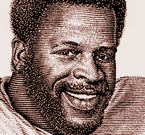January 24, 2008
Who Are You?
Let Us Focus
On What Binds Us Together.
What is culture?
According to Gollnick and Chinn, culture defines "who we are" and "influences our knowledge, beliefs, and values. It imposes order and meaning on our experiences" and "allows us to predict how others will behave in certain situations" (2006, p. 16).
One of the goals of multicultural education is for us to become aware of our own cultural norms and behaviors. We must understand our group's status and value in society.
How do we identify with the dominant culture and its formal institutions such as school, government, banks, and businesses?
Do we identify ourselves by who we are not?
Do we share the same values, behaviors, beliefs, and attitudes of the dominant culture? If not, how do we react or interact with it?
Reaction and Interaction
Once we understand ourselves and our relationship to the formal institutions and to the dominant culture as a whole, we can begin to develop awareness and understanding of how all groups react and interact with the dominant culture.
The United States of America is a democracy founded on the belief of egalitarianism, "the belief in social, political, and economic rights and privileges for all people" (Gollnick and Chinn, 2006, p. 33).
Multicultural education reflects John Dewey's suggestion in Democracy and Education (1916) that we, as a nation, should focus on what binds us together in transcendence of our personal group identities. Our classrooms should reflect this idea of binding ourselves together as one group and one people in a democratic setting.
As teachers we work with our students to create and share an engaging environment conducive to learning — in other words, we as teacher and students become one group and one people in a democratic setting. We do this by promoting cooperation and building self-efficacy. Students share responsibility and leadership. Together we promote social justice by identifying obstacles to equality such as prejudice, discrimination, and stereotyping.
This Beautiful Movement
Your full participation in our Multicultural Issues course should make you aware of your own culture.
 If we understand the cultural clues and norms of our own group, then we can begin to understand the cultural clues and norms of other social, cultural, and ethnic groups. Most importantly for you as teachers, this beautiful movement toward understanding takes place day-by-day in your classroom.
If we understand the cultural clues and norms of our own group, then we can begin to understand the cultural clues and norms of other social, cultural, and ethnic groups. Most importantly for you as teachers, this beautiful movement toward understanding takes place day-by-day in your classroom.
We are not limited to one group identity. Our cultural identities are not fixed. We all have intersecting identities that merge with the dominant culture. Many of your students are bicultural or even multicultural. Our cultural identity is like a mosaic of many colors.
What is the dominant culture here in Northwest Arkansas? What is the dominant culture in your hometown? What is the dominant culture in the United States of America?
Pieces of Identity
According to Johnson et al. (2005), the many pieces of cultural identity merge, interact, and influence one another, and in turn are affected by the interaction with the larger dominant culture and with those who wield power among those groups. Johnson et al. have identified eight groups that make up our cultural identity: gender, exceptionality, ethnicity, age, geography, class, language, and religion.
The ABC Who is Me? assignment asks you to enter an exploration into self-awareness. You have two tasks: Use each letter of the alphabet and make sure the letter reflects your cultural identity. How you accomplish your tasks depends on your creativity and the depth of your self-reflection.
Consider the eight pieces identified by Johnson et al. and how they influence who you are. Take a look at the ABC Who Is Me? homepage for outstanding examples of how your peers have identified the clues and norms of their cultural identity.
A few of you have already completed your ABC assignment. The many more of you who are working toward completion should take a moment to ponder your cultural identity and how it relates to concepts of self.
Your assignment follows the NCATE (National Council for the Accreditation of Teacher Education) rubric of "target," "acceptable," and "unacceptable."
Freddie A. Bowles
January 23, 2008
References:
Gollnick, D. M., & Chinn, P. C. (2006). Multicultural education in a pluralistic society, 7th ed. Upper Saddle River, NJ: Pearson.
Dewey, J. (1916). Democracy and education. New York: Barnes & Noble Books.
Johnson, J. A., Musial, D., Hall, G.E., Gollnick, D. M., & Dupuis, V. I. (2005). Introduction to the foudations of American education. Boston: Allyn & Bacon.
Planet Gnosis is a cyberweb of educational resources
managed by Dr. Freddie A. Bowles,
Assistant Professor of Foreign Language Education
in the Department of Curriculum and Instruction,
the University of Arkansas at Fayetteville.
Planet Gnosis is dedicated
to the exploration of education and teaching.
It is a cybersite of CornDancer.com,
a developmental website for the Mind and Spirit.
Submissions are invited.
|





